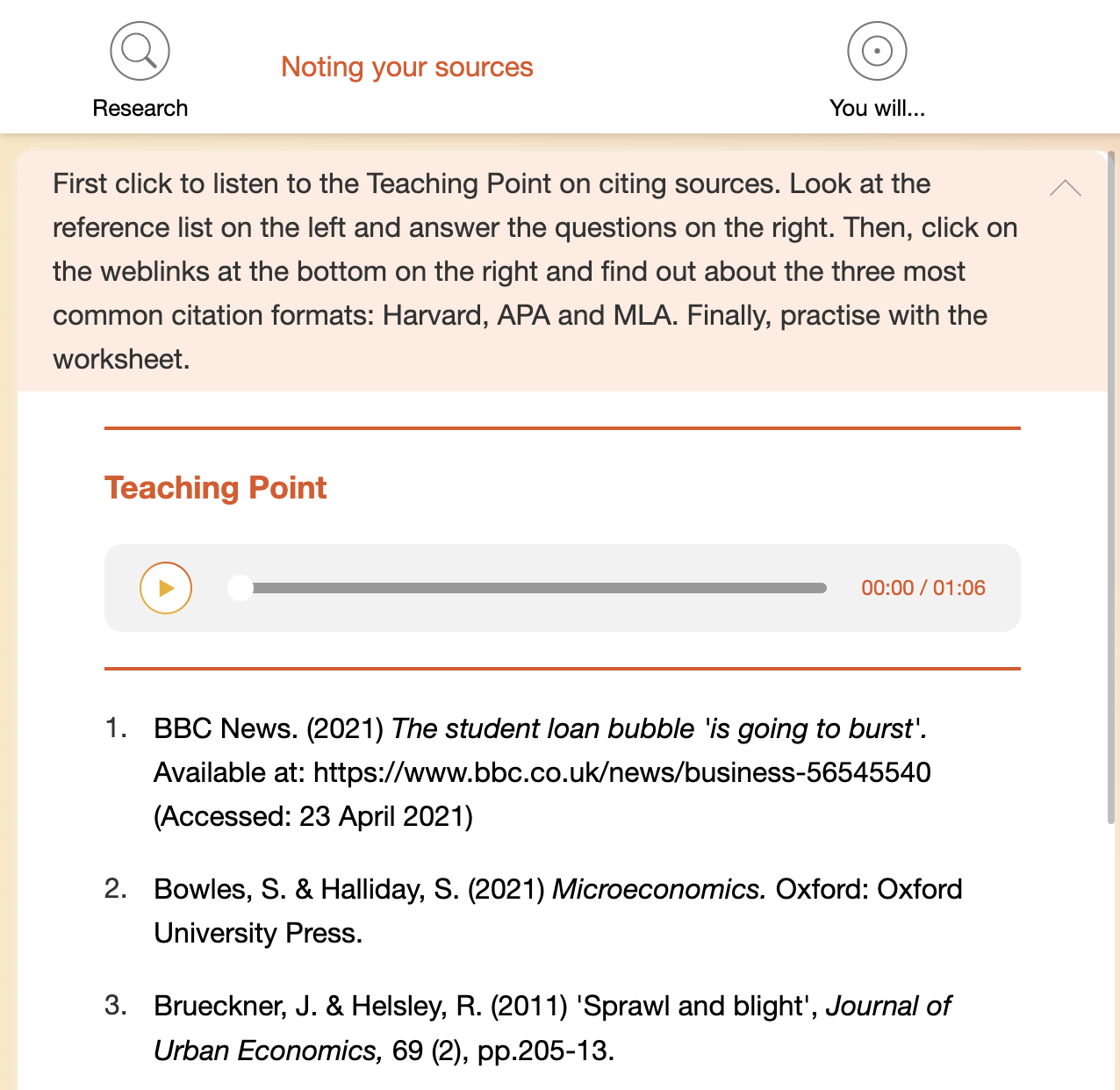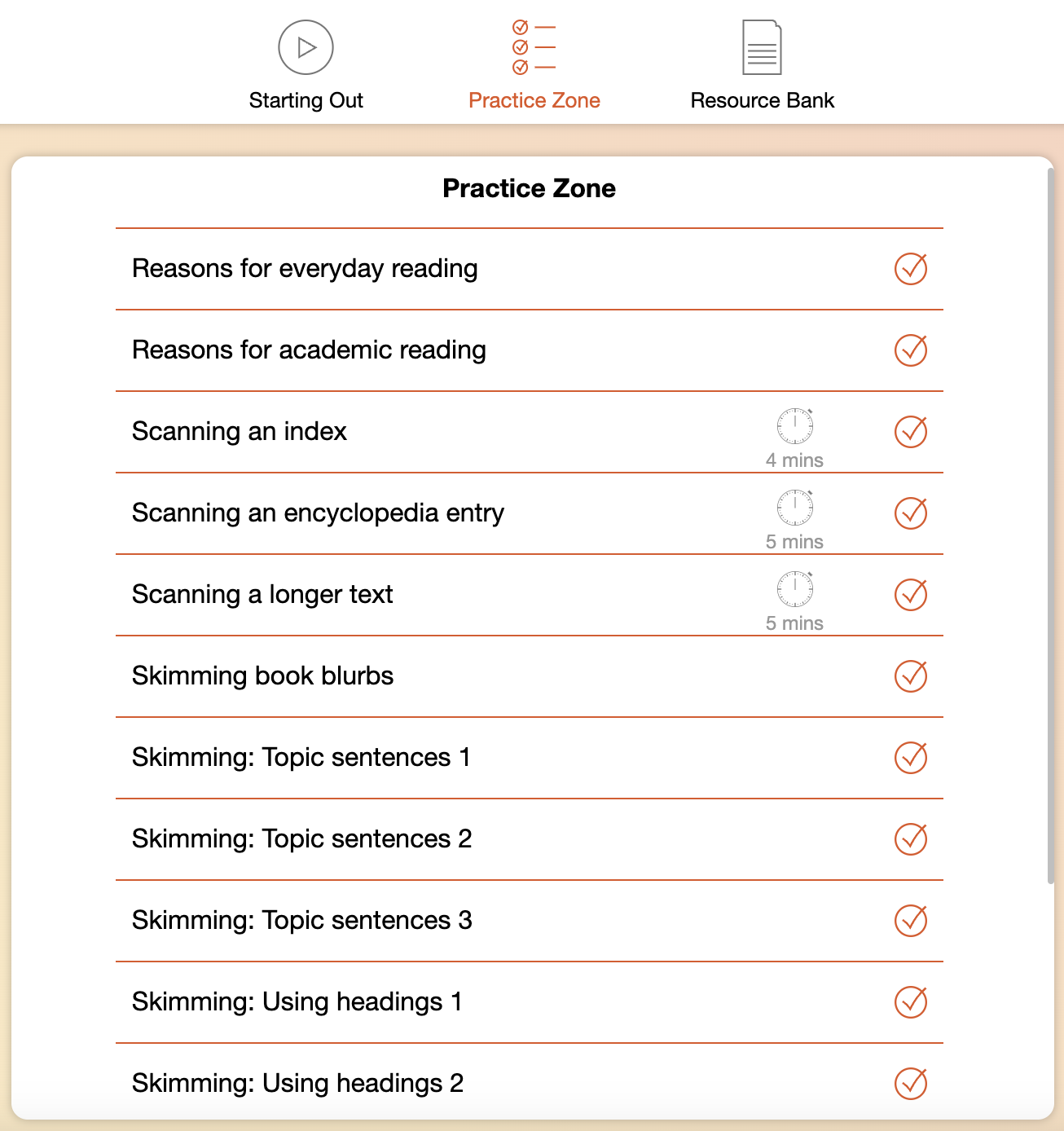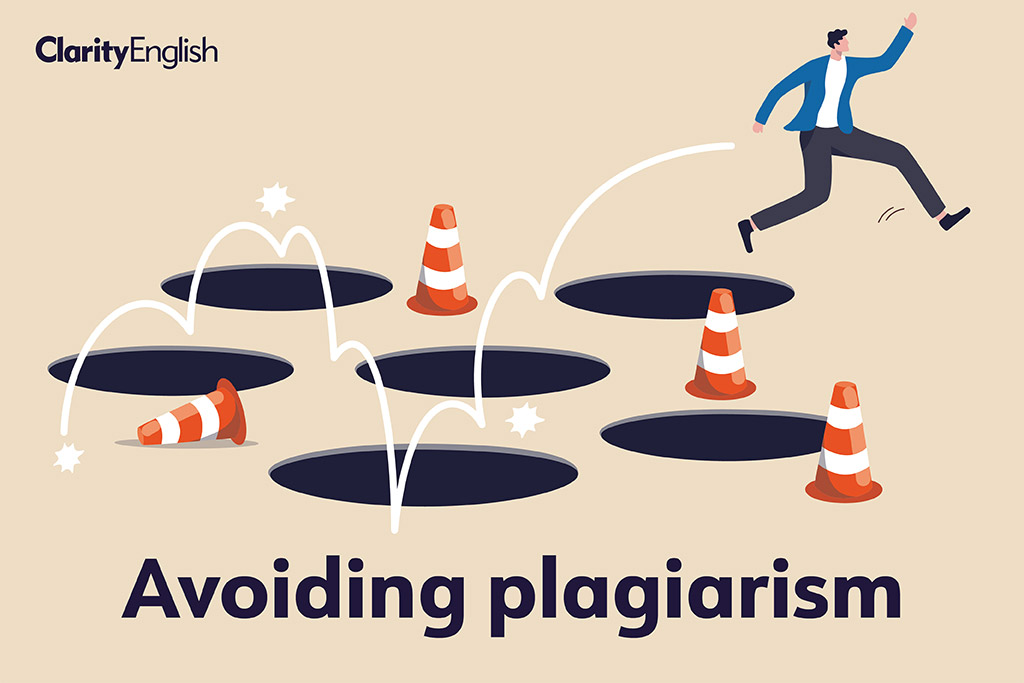In my last post, I argued that the common assumption that plagiarism is caused by academic dishonesty is lazy, and usually wrong. (It can also be very damaging, as this story from the Guardian illustrates.) Most students don’t set out to cheat; they are simply not equipped with the academic study skills that enable them to avoid plagiarism.
In a recent series of webinars, we looked at some of the causes of plagiarism: lack of a clear understanding of what constitutes plagiarism; poor time management and scheduling skills; carelessness in note taking; and poor revision strategies. Reading and listening skills are also very important: to get on top of their workload, students need to be able to process their lectures and reading lists efficiently.
Clarity’s academic study skills package, Study Skills Success, helps in all these areas. In fact, it was something of a surprise to realise quite how many of the units directly or indirectly address the causes of plagiarism. Let’s take a look at three examples.
1. Research: noting your sources
Most obviously, the Research unit tackles the issue of plagiarism head-on. The partial screenshot below illustrates how the program presents different types of media (websites, books, articles) as well as links to authoritative and accessible information on the most common citation formats. Crucially, this is done in the context of an interactive activity. This means that students have to actively engage with the information presented rather than just skimming through it. This is important because, as we can probably all agree, citation requirements are pretty dull stuff.

This type of activity, along with the mini-lecture from a teacher, goes some way to addressing the first issue outlined in the previous post: failure to understand plagiarism. This is done as part of a series of activities on note-taking, placing it firmly in the context in which students are most likely to commit accidental plagiarism: careless failure to note sources, or copying and pasting a sentence or two without noting that they have done so. It is therefore intensely practical, and transferable to their everyday studies.
2. Time management
The second issue is less straightforward. As my colleague Martin Moore pointed out in an earlier post: ‘Some people are incorrigible last-minuters and others obsessively complete their work as soon as they’re assigned it. So there’s no one approach that suits everyone. But if left entirely to their own instincts, students can quickly lose control of their workload.’ Research shows this to be an important cause of plagiarism, as students don’t have time to research the assignment topic and make notes properly. We should therefore confront learners with activities that force them to raise their awareness of their own habits, and provide strategies that will help them to regain and maintain a measure of discipline.
The first unit in Study Skills Success is ‘Independent learning’. It starts by asking students to analyse their own behaviour: Do they flip between social media and their studies? Are their study habits mood driven? How much control do they exert over their social life? It then moves on to planning and scheduling: making a ‘to do’ list and looking at the difference between importance and urgency. (And so on… for more details of the progression of topics and activities check out the syllabus document.) By the end of the unit, students are able to pinpoint their own time management issues and develop strategies to help them change their habits.
3. A skills-based approach
We’ve looked at the technical aspects of citation, and we’ve addressed behavioural issues that have been shown to result in plagiarism; equally important is skills development. After all, there is little point in students improving their scheduling if they don’t have the skills to enable them to take advantage of the time they have freed up. The key skills here are reading and listening, and the objective of developing them in an academic context is to enable students to approach their reading list and lectures in the most efficient and effective manner. A glance at the contents list for the Reading unit shows the approach that Study Skills Success takes.

Conclusion
Plagiarism is often characterised as the visible output of student dishonesty. Sometimes that’s true; often, though, it simply reflects the inadequacy of the academic study skills courses we provide for our first year students. In this post I’ve tried to show that a combination of technical input, behavioural analysis and skills-based training can give students a much firmer footing on the academic path.
Find out more about Study Skills Success.

